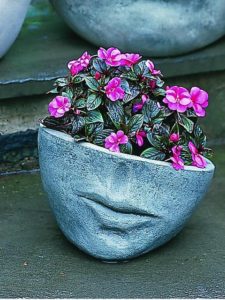Veggie Growing: A Rewarding Hobby
Having your own vegetable garden is a rewarding hobby that also gives you organic food right from your very own backyard. It is not hard to do even for beginners as long as the soil is decent and the vegetables to be planted are well-planned. The important thing to remember when you want a successful vegetable garden is to understand what needs to be done to keep your plants vigorous and healthy.
HOW TO GROW VEGGIES
Beginner gardeners should adapt the adage of ‘feed the soil’ as it stands to reason that good soil is sure to give the best produce. Traditional chemical agriculture uses synthetic fertilizers that are directly ‘fed’ to the crops.
This may be well, but it has been found that extreme usage of chemical force-feeding leads to soil impoverishment. The soil, once rich with life forms, microorganisms, and insects, is now transformed into one that has little or no nutrition and exists only as a means to anchor the roots of the plants.
 Granted that using mineral nutrients (rock phosphate, greens, and agricultural lime, to name a few) and fertilizers need to be added periodically to the organic garden, the best thing that can make the soil rich would be organic matter. This includes shredded leaves, compost, cover crops, or animal manure.
Granted that using mineral nutrients (rock phosphate, greens, and agricultural lime, to name a few) and fertilizers need to be added periodically to the organic garden, the best thing that can make the soil rich would be organic matter. This includes shredded leaves, compost, cover crops, or animal manure.
Nothing improves the structure and fertility of any kind of soil than organic matter. It gives nutrients and a continuous nitrogen source that make plants grow healthily and vigorously. It is also an important food source for soil microbes. The processes of decomposition and decay are carried out by the organisms in the soil and, in turn, make these nutrients available to the plants.
WHERE TO GROW VEGGIES
As travel brochures always tote, it is the location that makes a trip alluring. The case is also true for gardens. It is crucial that the space in your garden is used efficiently, the amount of sunlight is taken into consideration, safety precautions against wind and frost are studied, and it must be close to a source of water. Consider the following factors:
- Space
A huge garden may look fantastic, only if you have the space, time and energy for it.
- Avoid row planting
Old fashioned row planting will not work efficiently in backyards. The rule of thumb in backyard planting is: having fewer rows means more available square footage, which you will have to walk around on or plant in other crops. Having raised beds or open beds will be an ideal solution to free more space for other new crops. Another advantage would be less soil compaction which will make it fluffier and beneficial for the plants’ roots. It also does away with too much garden drudgery like mulching, weeding, and watering.
- Vertical planting
Another wonderful idea to use other than raised beds would be trellis planting. It is the best way to save space in the garden which would be ideal for small gardens. Even with a large garden, trellis gardening will still work best for vining crops such as tomatoes and cucumbers. Fences surrounding the garden would be perfect to use as a trellis for the plants. Needless to say, they also add beauty and balance to the garden.
WHEN TO GROW VEGGIES
A vegetable garden can benefit from a crop rotation cycle, which simply means planting the same crop in the same place once every three years. By doing so, the same nutrients are not depleted when planting is done year after year. Disease pathogens and insects or pests that usually stay in the soil after the crops have been harvested will be thwarted by this kind of planting practice.
A plan of the garden has to be made on paper when you want to use the three-year crop rotation system. Putting it down on paper will show the exact location of the crops, especially if you grow a variety of vegetables. Remembering their exact location after harvesting has been done will be difficult and hard to remember if the plans have not been graphed on paper. It will also be great if you save those garden plans that you can put to good use after harvesting.
Another way to make full use of the growing area in your garden would be to plant crops in succession. The best way to do this would be to plant a few transplants or seeds at a time, to encompass the whole growing season. You can start by planting every week in any season something that is new in the garden. The first cold-hardy peas and greens can be planted in late winter to early spring, and as soon as the weather warms, plant the heat-loving plants such as eggplants, peppers, and tomatoes.
As soon as you have harvested, keep the beds clean to give space to the new vegetables that will be planted. Another option would be to plant quick-growing plants like radishes side by side with long-season plants like parsnips and carrots. This will then give breathing space to the long-season plants right after you have harvested the quick-growing ones.
TIPS AND ADVICE WHEN GROWING VEGGIES
It may be a lot of hard work for beginner gardeners, but the sight of the healthy crops that you will harvest will make you feel proud and accomplished. The best advice would be to always keep good records of everything that you have observed and learned from your gardening.
Garden plans are another way of keeping good records as they help you track the exact location of the crops. This will help you not to rely on your memory which will be difficult since harvesting may come after a long period of time.
Careful observation of your crop’s progress and advice from other seasoned gardeners (which you can also get online or through friends) must be noted down. The most important thing to remember in having the best garden year in and year out would still be keen observation on the way the plants grow, with both failure and success stories all written down.





Comments on this entry are closed.